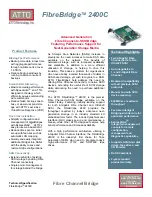
ControlNet coupler BK7000 in the ControlNet
17
BK 7000
ControlNet coupler BK7000 in the ControlNet
Introducing the system
The deterministic control network is a serial communication system for
communication between devices that wish to exchange time-critical appli-
cation information in a deterministic and predictable manner. These devi-
ces include simple I/O devices, such as sensors/actuators as well as com-
plex control devices such as robots, programmable logic controllers, wel-
ders, process controllers, etc. Unlike general-purpose communication sys-
tems that rely on the destination delivery model, this network uses the pro-
ducer/consumer model. The producer/consumer model allows the ex-
change of time-critical application information between a sending device
(e.g., the producer) and many receiving devices (e.g., the consumers) wi-
thout the need to send the data multiple times to multiple destinations. This
is accomplished by attaching a unique identifier to each piece of applicati-
on information that is being produced onto the network medium. Any devi-
ce that requires a specific piece of application information simply filters the
data on the network medium for the appropriate identifier. Many devices
can receive the same produced piece of application information from a
single producing device. The deterministic control network provides a high
degree of protocol efficiency by utilising an implied token passing mecha-
nism. This mechanism allows all devices equal access to the network wi-
thout the network overhead associated with passing a “token” to each de-
vice granting it permission to send data. The protocol utilises a time-based
Scheduling mechanism that provides network devices with deterministic
and predictable access to the medium while preventing network collisions.
This scheduling mechanism allows time-critical data, which is required on a
periodic, repeatable and predictable basis, to be produced on a predefined
schedule without the loss of efficiency associated with continuously re-
questing or “polling” for the required data. The network protocol supports
an additional mechanism that allows data that is not time-critical in nature
or that is only required on a occasional basis to utilise any available net-
work time. This unscheduled data is transmitted after the production of the
time-critical data has been completed and before the beginning of the next
scheduled production of time-critical data.












































